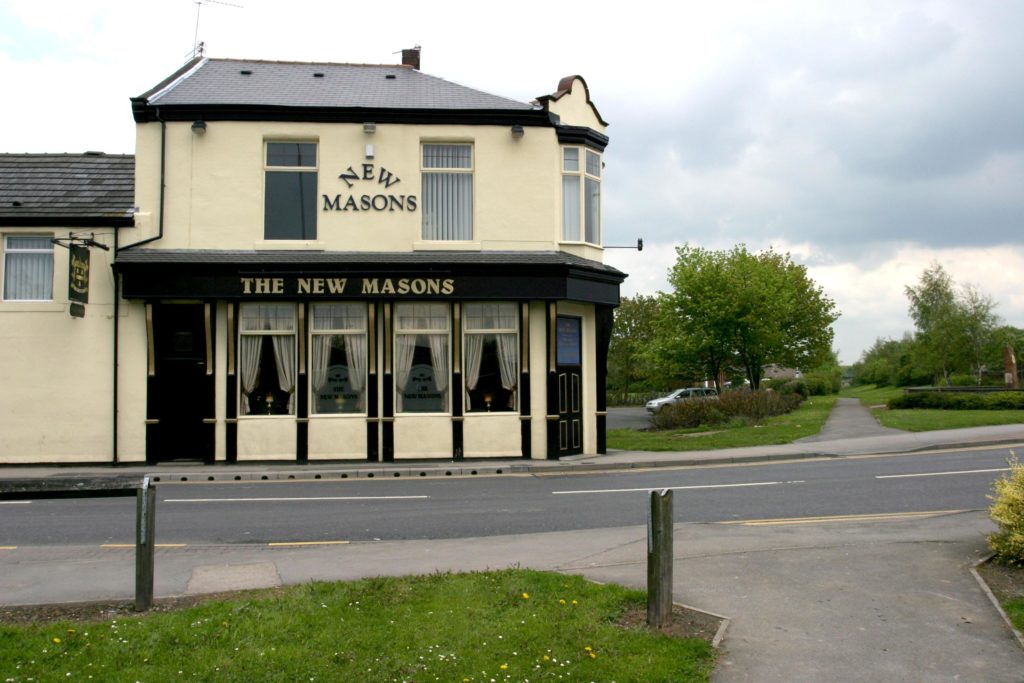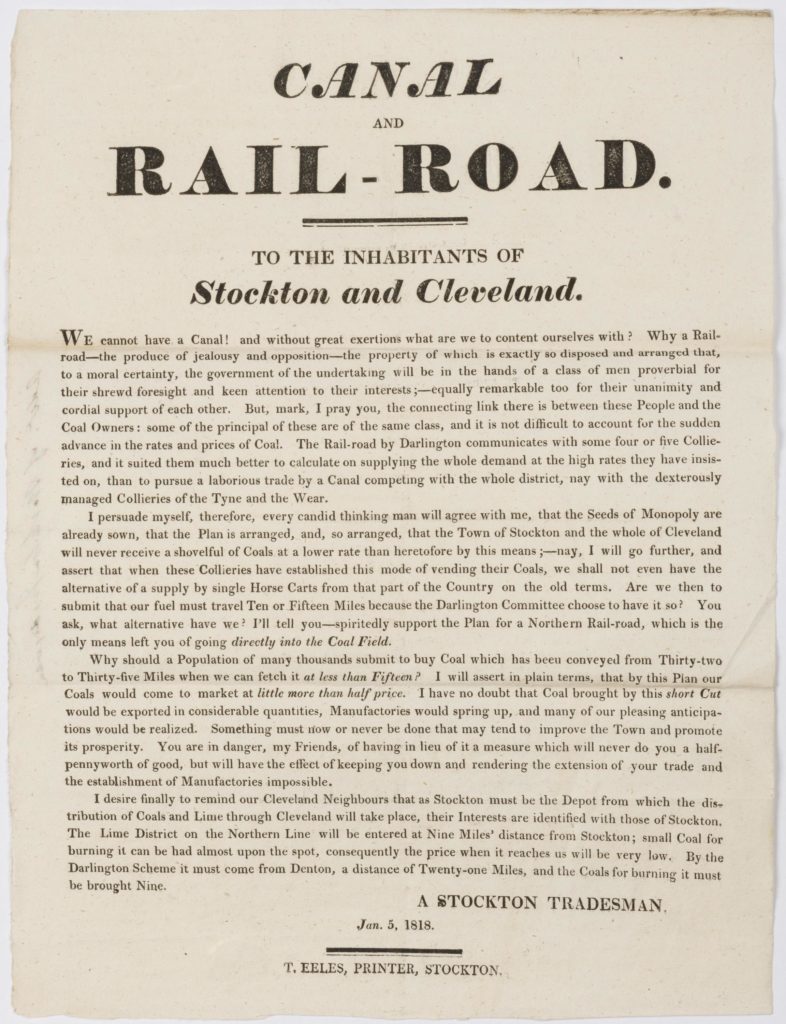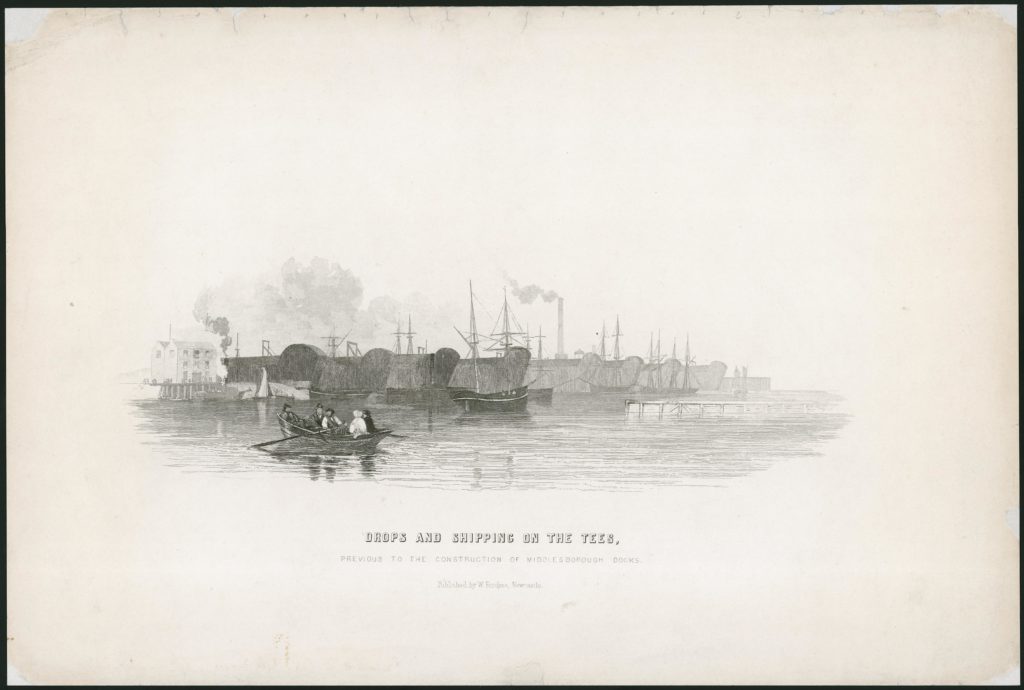As part of my Collaborative Doctoral Partnership, I have been given the opportunity to undertake a six-month work placement at the National Railway Museum. During this time, I have been cataloguing the fascinating and largely undiscovered archive of Leonard Raisbeck.
Who was Leonard Raisbeck?
Leonard Raisbeck, you have probably never heard the name. He was a solicitor for the Tees Navigation Company in the decades preceding the opening of the Stockton and Darlington Railway in 1825, the world’s first public railway to use steam locomotives. Interestingly, he also owned the only known sugar house in the region at Stockton. As joint solicitor to the Stockton & Darlington Railway, he played a major role in establishing the railway project. However, his story is far from simple and his early ventures with the scheme were.

What has he left behind?
Raisbeck was an important player in planning and organising the railway. He worked closely with the railway’s chief financial backer Edward Pease and its famous engineer George Stephenson. However, unlike his more well-known counterparts he has become all but lost to posterity, at least until now. What is perhaps just as remarkable as the role he played in establishing the railway, is the wealth of records he left behind. These include letters sent from him and the railway’s backers, surveys of the local coal interests in the area and printed pamphlets detailing the politics and discourse surrounding the project.

What do they tell us?
The South West Durham Collieries
One of the major lessons the archive teaches us is just how fundamental the coal of South West Durham was in motivating the businessmen of Stockton and Darlington to build the railway. Coal was the lifeblood of the North East of England, it provided the fuel for the region’s industries and was exported down the East Coast to London. However, most of it was mined in North Durham and in Northumberland near the Rivers Tyne and Wear.
Teesside, however, struggled to make inroads into the industry and as a result it was Newcastle and Sunderland that controlled most of the trade. That is until the railway came.
The Raisbeck documents show that the scheme to connect Darlington and Stockton was chiefly to connect the port of Stockton with the collieries found in West Auckland. Ironically, within the Raisbeck materials is a poster declaring the disdain of a local tradesman from Stockton who is angry about the monopoly on coal that will be handed to the small number of collieries in the Auckland vicinity as a consequence of the railway. He suggests that the railway should alternatively be built to connect Darlington and Stockton with the coalfield in North Durham on account of its greater number of collieries. This never materialised, but it is interesting to see the debates that were going on at the time.

Canal or Railroad?
The proprietors of the scheme had not originally decided that a railway was the answer, initially they thought a canal would be best. However, correspondence in the archive reveals how a railway, or railroad as it was often called, was seen as the better solution. This was owing to the fact that it was deemed more suitable for transporting goods of a heavy weight downhill. All that coal was certainly going to be heavy.
Middlesbrough Extension Controversy
The decision to eventually extend the railway to Middlesbrough was undertaken with the view of making the railway more efficient as the coal from the collieries around Shildon could now be transported far closer to the mouth of the Tees. This would be to the great benefit of the London consumers of domestic coal and to the region itself. However, not everyone was happy about the extension, including Raisbeck himself.
His letters show that he was angry with what he saw as an attempt by the company to subvert Stockton’s influence as the terminus of the railway. He voted against the proposed extension but to no avail and the line was soon built. However, many of Raisbeck’s fears were eventually realised once the line was opened in 1830 as Middlesbrough quickly outstripped Stockton in size and influence, becoming one of the major steel towns of Britain.

Why the Stockton & Darlington Railway?
Perhaps the clearest lesson the Raisbeck archive tells us is just how intimately the Stockton & Darlington Railway project was tied up with coal. Much of the printed material in the archive reveals how it was the cost savings in coal transportation from collieries such as at Witton Park and Black Boy that the railway would provide in comparison to the local turnpike road that featured as the big motivator in building the railway.
It was estimated that coal could be transported to Darlington by rail at just 3d per mile as opposed to the 9d per mile on road. Furthermore, the longer the line the more cost savings that would occur. Even when seeking Parliamentary approval, it was the argument that the area’s coal would be of national importance to London that featured as the basis for gaining government support. If we can say anything about the Raisbeck materials it is that they cement the legacy of coal in railway development firmly in the history books.

Brilliant piece of work.Well written and researched.
On 18 September 1810 at a dinner in Stockton Town Hall, Raisbeck proposed that a committee be formed to examine the practicalities of a railway or canal for connecting the collieries to the port. This is the first recorded use of fhe word ‘railway’ in the north east. A true history-maker